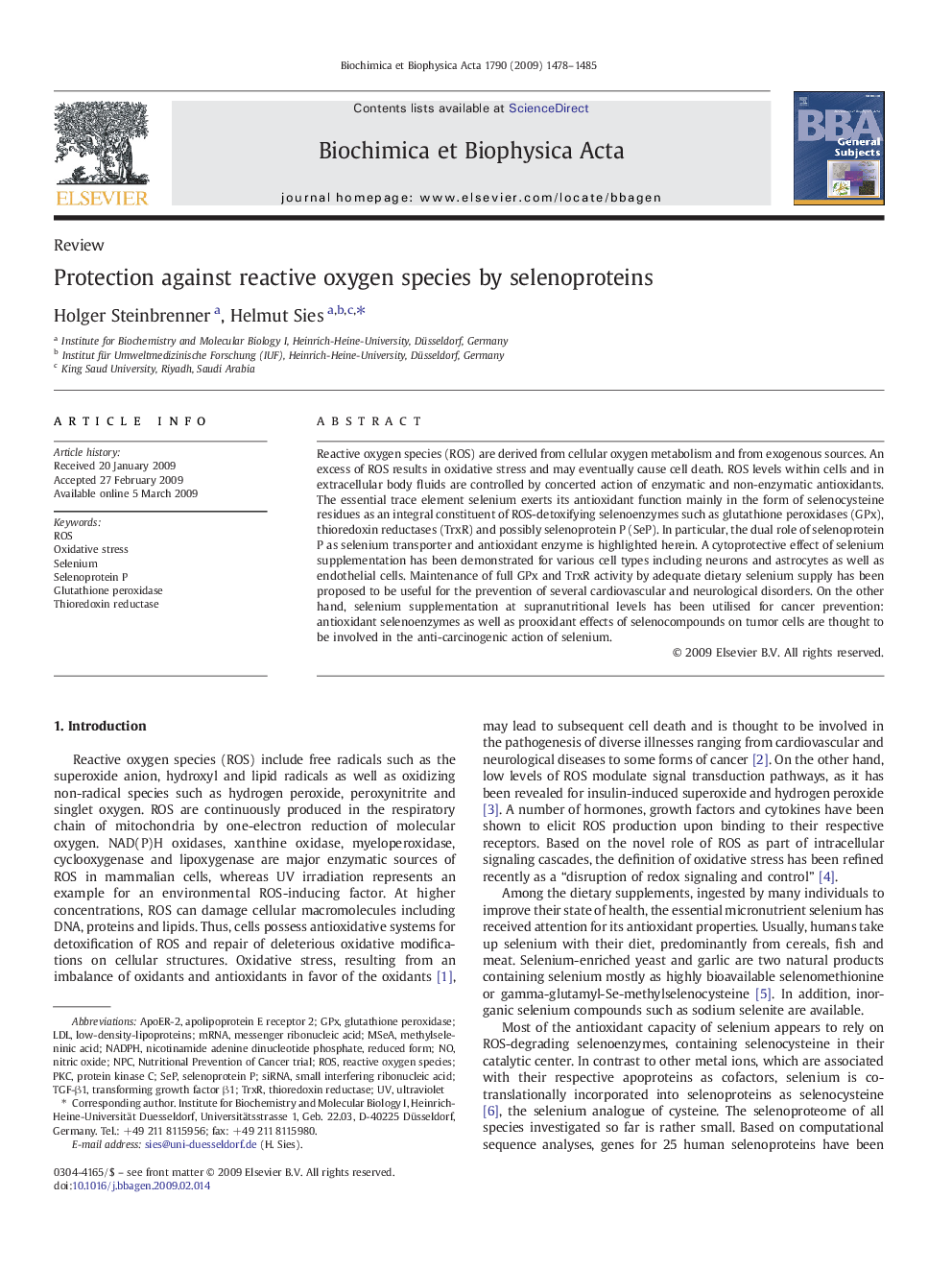| Article ID | Journal | Published Year | Pages | File Type |
|---|---|---|---|---|
| 1948262 | Biochimica et Biophysica Acta (BBA) - General Subjects | 2009 | 8 Pages |
Reactive oxygen species (ROS) are derived from cellular oxygen metabolism and from exogenous sources. An excess of ROS results in oxidative stress and may eventually cause cell death. ROS levels within cells and in extracellular body fluids are controlled by concerted action of enzymatic and non-enzymatic antioxidants. The essential trace element selenium exerts its antioxidant function mainly in the form of selenocysteine residues as an integral constituent of ROS-detoxifying selenoenzymes such as glutathione peroxidases (GPx), thioredoxin reductases (TrxR) and possibly selenoprotein P (SeP). In particular, the dual role of selenoprotein P as selenium transporter and antioxidant enzyme is highlighted herein. A cytoprotective effect of selenium supplementation has been demonstrated for various cell types including neurons and astrocytes as well as endothelial cells. Maintenance of full GPx and TrxR activity by adequate dietary selenium supply has been proposed to be useful for the prevention of several cardiovascular and neurological disorders. On the other hand, selenium supplementation at supranutritional levels has been utilised for cancer prevention: antioxidant selenoenzymes as well as prooxidant effects of selenocompounds on tumor cells are thought to be involved in the anti-carcinogenic action of selenium.
